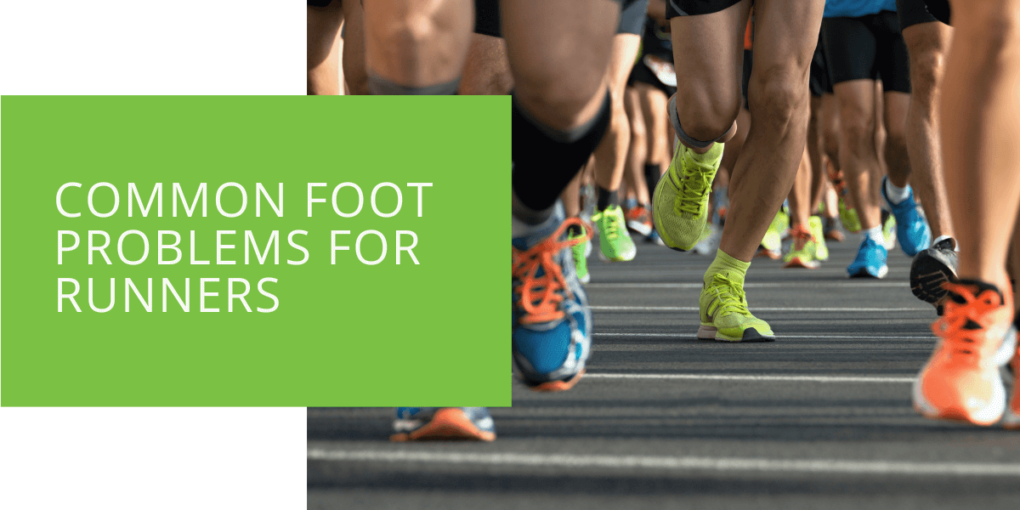Common Foot Problems for Runners
As a passionate and dedicated runner, you know there's nothing like lacing up your sneakers and hitting the open road. The wind in your hair, the sun on your skin, and the sense of accomplishment that comes with conquering long distances - it's all part of the exhilarating experience that keeps you coming back for more. But as any seasoned runner knows, this high-impact activity can take a toll on your body, particularly your feet and ankles. From blisters and calluses to more serious issues like plantar fasciitis and stress fractures, it's important to recognize that running can bring some common foot problems and all the benefits.
That's why we've created this comprehensive guide to help you navigate the world of foot health and running. We'll explore the most common issues that runners face, from minor annoyances to more serious conditions, and provide expert advice and practical solutions to keep your feet happy and healthy. Whether you're a seasoned marathoner or a beginner just starting, our guide will help you stay pain-free and focused on the joys of running so you can keep pushing yourself to new heights and achieving your goals.
Key Takeaways
- Common foot problems in runners, such as plantar fasciitis, stress fractures, metatarsalgia, and ankle injuries, can significantly impact your running experience and overall foot health.
- Proper diagnosis and treatment, including rest, physical therapy, and personalized care from a podiatrist, are essential for overcoming these issues and preventing future foot problems.
- Collaborative care between podiatrists and physical therapists, focusing on preventive measures and early intervention, can help runners enjoy pain-free and fulfilling running journeys.
Common Foot Problems in Runners
Plantar Fasciitis: The Heel Pain That Haunts Runners
What is Plantar Fasciitis?
Plantar fasciitis is a frequent and often painful foot problem encountered by runners. This condition arises due to inflammation of the plantar fascia, a thick band of tissue that runs along the bottom of your foot and plays a crucial role in supporting the arch.
Causes of Plantar Fasciitis in Runners
Plantar fasciitis in runners is frequently attributed to overuse or repetitive stress on the plantar fascia. Long-distance running, improper footwear, or having high arches can increase the risk of developing this condition.
Signs and Symptoms
Runners grappling with plantar fasciitis typically experience foot pain, particularly pronounced in the morning or following periods of inactivity. The pain often subsides during exercise but can return with a vengeance afterward.
Diagnosis and Treatment Options
Diagnosing plantar fasciitis involves a comprehensive evaluation by a podiatrist, which may include imaging tests. Treatment options encompass a range of strategies, from rest, stretching exercises, and orthotic inserts to more advanced interventions such as corticosteroid injections or, in severe cases, surgical procedures.
Prevention Tips for Runners
To prevent the onset of plantar fasciitis, it's vital to invest in proper running shoes, regularly engage in calf muscle stretches, and avoid sudden increases in training intensity. Your choice of footwear, stretching routines, and gradual progress in mileage can significantly reduce your susceptibility to this painful condition.
Stress Fractures: When Running Turns Into a Painful Affair
Stress Fractures: A Runner's Nightmare
Stress fractures, often occurring in the metatarsal bones of the feet, are a source of significant concern for runners. These fractures are small cracks in the bones, typically resulting from the cumulative stress and overuse of running.
Identifying Stress Fractures
Runners experiencing stress fractures may notice localized pain, swelling, and tenderness in the affected area. Precise diagnosis necessitates imaging tests such as X-rays or MRI scans to confirm the presence of these hairline fractures.
Treatment and Recovery Strategies
Managing stress fractures entails immediate rest and avoiding weight-bearing activities. Depending on the severity, you may require crutches, physical therapy, and even custom orthotics to expedite healing and reduce the likelihood of recurrence.
Preventing Stress Fractures in the Feet
To minimize the risk of stress fractures, it's essential to diversify your training regimen with cross-training activities, ensure proper nutritional support for bone health, and progressively increase your mileage. Incorporating these practices into your running routine can effectively safeguard against stress fractures.

Metatarsalgia: The Ball-of-Foot Agony
Understanding Metatarsalgia
Metatarsalgia, characterized by pain and inflammation in the ball of your foot, particularly near the metatarsal bones, is a common affliction among runners. The metatarsals are the long bones in your foot that connect to the toes, and this condition often stems from excessive pressure on this region during running.
How Running Can Cause Metatarsalgia
The repetitive impact endured during running can lead to metatarsalgia, which runners typically describe as a sensation akin to walking on a bruise or experiencing sharp pain in the forefoot. The ball of the foot is subjected to considerable stress during running, making it susceptible to inflammation and discomfort.
Symptoms and Diagnosis
Metatarsalgia manifests as pain in the ball of the foot and a feeling of walking on pebbles. Diagnosis necessitates a thorough physical examination by a podiatrist, occasionally supplemented by imaging studies to rule out other potential issues.
Managing and Alleviating Metatarsalgia
Addressing metatarsalgia often involves rest, applying ice, using metatarsal pads or orthotic inserts, and selecting appropriately cushioned running shoes. Collectively, these measures aim to relieve pressure and reduce discomfort in the affected area.
Footwear Recommendations for Metatarsalgia Relief
When dealing with metatarsalgia, opt for running shoes that offer ample cushioning in the forefoot region and a roomy toe box to minimize pressure on the ball of the foot. Proper footwear plays a pivotal role in preventing and managing this condition, as it can significantly influence the distribution of weight and impact forces during your runs.
Ankle Injuries: The Ankle Sprain Challenge
Ankle Sprains: A Common Running Injury
Ankle sprains occur when the ligaments supporting the ankle are stretched or torn, and runners are particularly vulnerable due to the uneven terrain they often encounter. This prevalent injury among runners can range from mild to severe, affecting the ankle's stability and function.
Types of Ankle Injuries in Runners
In addition to sprains, runners may experience Achilles tendonitis or other overuse injuries that predominantly affect the ankle. These injuries can manifest as chronic pain and reduced mobility, affecting both running performance and daily activities.
Immediate First Aid and Management
Swift and appropriate initial treatment of ankle sprains includes adhering to the RICE protocol: Rest, Ice, Compression, and Elevation. While mild sprains may heal with rest and self-care, severe injuries demand immediate medical attention and potentially more advanced treatments.
Rehabilitation and Prevention Techniques
Effective rehabilitation after an ankle injury often includes physical therapy and exercises to strengthen the ankle. These exercises aim to restore range of motion, enhance stability, and prevent future injuries by strengthening the muscles and ligaments around the ankle joint.
Strengthening Exercises for Ankle Stability
Incorporating targeted exercises like calf raises and ankle circles into your routine can significantly improve ankle strength and stability, reducing the risk of future sprains. These exercises specifically target the muscle groups responsible for supporting the ankle, helping to prevent re-injury.

Toenail Problems: More Than Just a Cosmetic Concern
Toenail Issues: More Than Just a Cosmetic Concern
While toenail problems like black toenails or ingrown nails may appear minor, they can cause significant discomfort and impact your running experience. Toenail issues can be more than just an aesthetic inconvenience, as they have the potential to result in pain and even infection if left unaddressed.
Common Toenail Problems in Runners
Trauma from ill-fitting shoes or the repetitive pressure exerted during running can lead to various toenail problems. Issues such as black toenails, ingrown toenails, or fungal infections can hinder your running performance and overall foot health.
Preventive Measures for Toenail Issues
Preventing toenail problems involves selecting running shoes with ample toe room, maintaining proper toenail hygiene, and seeking professional help if issues persist. Choosing the right footwear and adopting good toenail care practices can help you steer clear of these pesky problems.
Seeking Professional Help
If toenail issues persist or worsen, it's crucial to consult a podiatrist for accurate diagnosis and appropriate treatment. A podiatrist can offer tailored solutions to your specific toenail problems, ensuring long-term relief and optimal foot health.
Foot and Ankle Care
Causes of Foot Pain in Runners
Identifying the Root Causes of Foot Pain
To effectively address foot pain, it's essential to understand the underlying factors contributing to your discomfort. Recognizing the root causes allows for targeted treatment and prevention strategies.
Overuse Injuries vs. Traumatic Injuries
Distinguishing between overuse injuries that develop gradually and traumatic injuries resulting from sudden impact is crucial for appropriate management. Overuse injuries often result from prolonged stress on the foot, while traumatic injuries stem from acute incidents.
Role of Footwear and Running Surface
Choosing running shoes and the type of terrain you run on can profoundly impact foot health and overall performance. Selecting the right footwear and adapting to the running surface can minimize stress on your feet and help prevent injuries.
Foot Pain Relief
Pain Relief Strategies for Runners
Learn about effective pain relief strategies, including the RICE protocol, to alleviate foot pain during and after running. Implementing these strategies can provide immediate relief and support the healing process.
When to Consult a Podiatrist
While home remedies can be helpful, persistent foot pain should prompt a consultation with a podiatrist for a thorough evaluation. A podiatrist can offer expert guidance and recommend advanced treatments when necessary.
Importance of Early Intervention
Addressing foot pain promptly is crucial to preventing minor issues from escalating into more severe ones. Timely intervention can expedite recovery and minimize the risk of chronic foot conditions.
Back Pain and Foot Problems
The Surprising Connection Between Foot Problems and Back Pain
Discover the intricate relationship between foot issues and back pain in runners, and how addressing one can relieve the other. The alignment and functionality of your feet can significantly impact the posture and comfort of your entire body, including your back.
How Addressing Foot Issues Can Relieve Back Pain
By providing proper support and stability to your feet, you can reduce the strain on your back and improve your overall running experience. Addressing foot problems can lead to improved biomechanics, lessened back strain, and a more enjoyable running journey.
Collaborative Care Approach
For comprehensive care, consider working collaboratively with a podiatrist and a physical therapist to ensure your foot and back health are optimized for running. A multidisciplinary approach can address both immediate issues and long-term performance goals, providing a holistic approach to your well-being.
Conclusion
We wholeheartedly understand the passion and dedication that runners like you bring to their sport, and we're here to support your journey every step of the way. If you're currently experiencing any form of foot or ankle discomfort while running, we urge you not to delay seeking assistance from our experienced podiatrists. Together, we can ensure that your running experience remains enjoyable, fulfilling, and, most importantly, pain-free.
Don't let foot problems hinder your running goals and enthusiasm. Take the proactive step of scheduling an appointment with us today and embark on the path to healthier feet and enhanced running performance. Your running aspirations deserve nothing less than the best care available, and we are committed to providing it.

